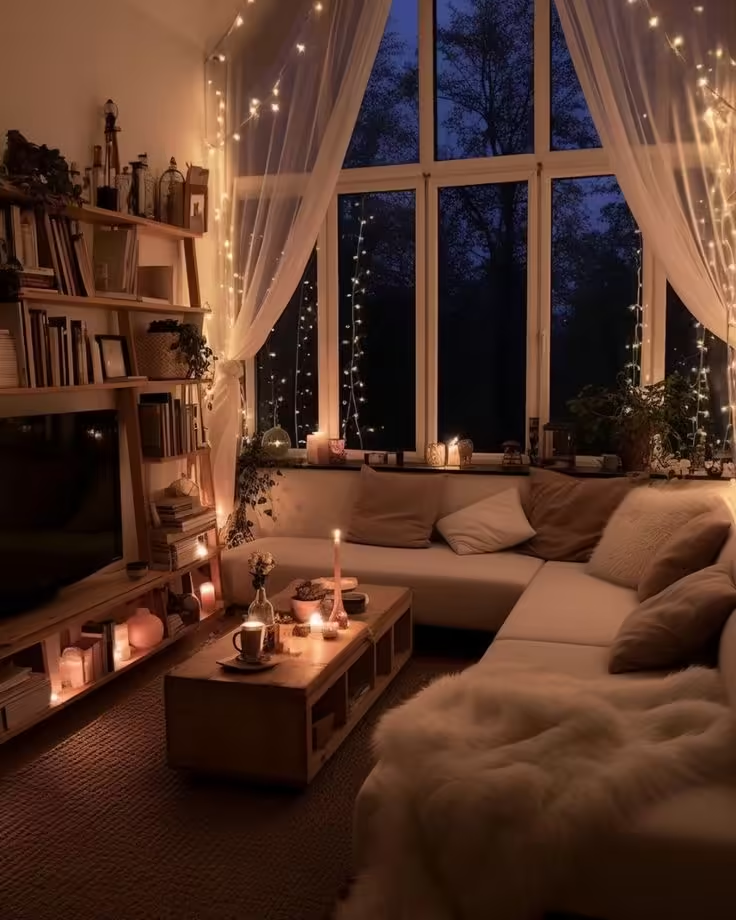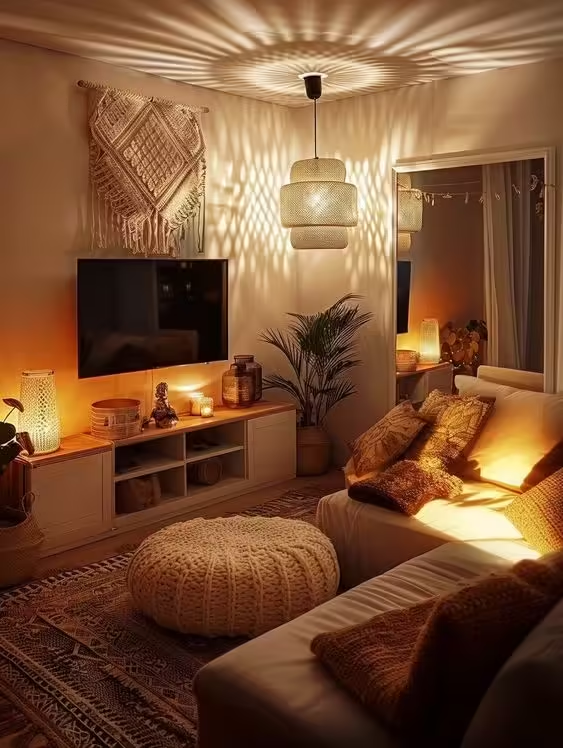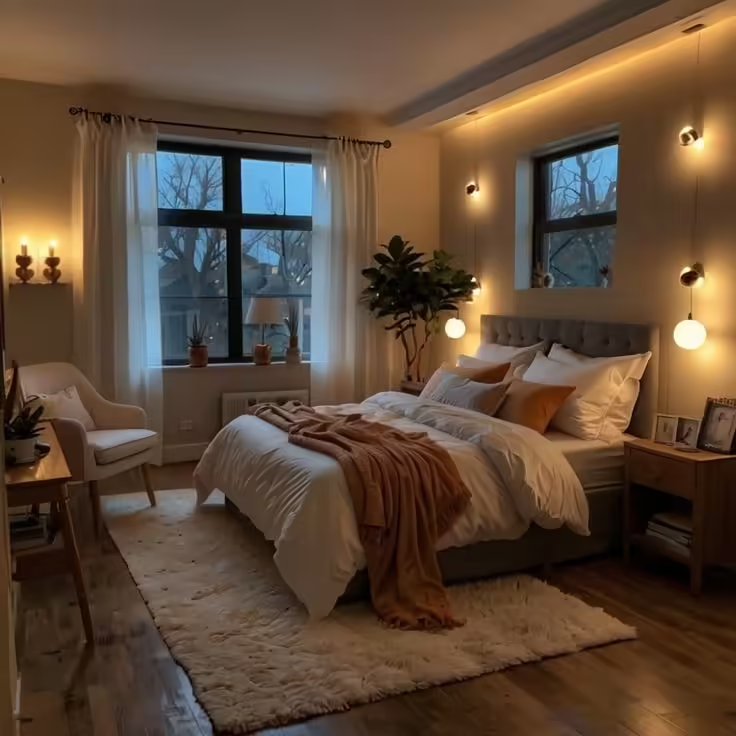Lighting has a sneaky way of influencing how we feel in a room. Whether you’re setting the vibe for a cozy night in or trying to boost your productivity, the right lighting can totally transform your space. And that’s where *mood lighting* comes in.
But what exactly is mood lighting, and how can it enhance your living environment? Let’s dive in, chat about the pros and cons, and look at some real-world examples to help you get the ambiance just right.
What is Mood Lighting?
In short, mood lighting is all about using different lighting sources to create a specific atmosphere. It’s not about having the brightest light in the room—it’s about using softer, more strategic lighting to shift the vibe. Think dimmed lights for a romantic dinner, warm lamps for an inviting living room, or even colored lights to bring out your creative side.
The great thing about mood lighting is that it’s flexible and adjustable depending on what you need. With a couple of tweaks, your space can go from work mode to total relaxation in no time.

Why You Need Mood Lighting
1. It Creates Ambiance
One of the biggest benefits is its ability to transform the feel of a room. Soft, warm lighting can make a space feel cozy and inviting, while cooler tones can sharpen focus and make you more alert. Want a bit of relaxation after a long day? Throw on some warm, low lights. Need to be productive? Turn up the brightness or add cool-toned lamps to your workspace.
2. Flexibility and Control
Mood lighting puts the power in your hands. It allows you to tailor the lighting based on how you feel at any given time. Many smart bulbs today even let you control everything from an app, meaning you can set the exact vibe you want—whether you’re relaxing, throwing a party, or even hosting a dinner.
3. Aesthetic Appeal
Let’s be real, mood lighting looks beautiful. Well-placed lights can accentuate architectural features, highlight artwork, or make a space feel intentionally designed. It’s a subtle but powerful way to make your home look more polished and put together.
Some Downsides
1. Potential for Overcomplication
When it comes to adjusting lighting, things can get tricky. Especially if you’re dealing with smart systems or multiple fixtures, finding the perfect balance can feel overwhelming. Plus, constantly fiddling with light settings can get a little tedious if you’re not a techy person. So keep it simple, stick to a few key pieces.
2. Can Affect Productivity
While mood lighting is great for relaxation, it’s not always the best for tasks that require focus. For example, low light levels can make it harder to concentrate or read. If your home doubles as your workspace, you’ll need to make sure your mood lighting doesn’t hinder your productivity.
3. Costs Add Up
Quality mood lighting options—especially those with smart tech—can get pricey. Between smart bulbs, dimmer switches, and various light sources, the costs can escalate. While basic lamps and warm bulbs can get you started, investing in smart or high-end solutions can put a dent in your wallet.

Make Mood Lighting Work For Your Space
1. Living Room – Cozy & Inviting
Let’s say you want your living room to feel cozy when you get home from a long day. Installing a couple of dimmable table lamps with warm bulbs can soften the space. Adding a soft uplight or even a string of fairy lights can amplify the cozy factor if you have a corner or a bookshelf. A warm glow in the evening, paired with soft music, can be a game-changer after a stressful day.
2. Bedroom – Relaxing Retreat
If your bedroom is your sanctuary (like mine), mood lighting is key to making it feel like a retreat. Try using a bedside lamp with a dimmer or even a colored light that mimics natural sunrise or sunset. This can help signal to your body when it’s time to wind down or wake up. A small salt lamp or lantern-style light can add an extra layer of relaxation.
3. Workspace – Sharp & Focused
A cool-toned desk lamp can help you stay focused and alert while working. The cooler, white light helps with concentration, while avoiding harsh overhead lighting keeps things soft on your eyes. You could also add task lighting—like under-shelf lights—to spotlight specific areas of your desk.
4. Bathroom – Spa-Like Feel
Who doesn’t love a spa-like bathroom experience? Adding dimmable LED lights around your mirror or even under the cabinet can give your bathroom a serene, luxurious vibe. Imagine dimming the lights while taking a bath or getting ready for bed—it’s all about creating that peaceful mood.

Get Started with Mood Lighting
1. Layer Your Lighting: Don’t rely on just one light source. Combine overhead lights, table lamps, and even floor lights for a dynamic feel.
2. Use Dimmers: Dimmers are a must for mood lighting. They let you control the intensity of the light depending on the time of day or your mood.
3. Explore Color: If you’re open to experimentation, colored bulbs can offer a fun way to shift the vibe. A soft blue can feel calming, while a warm amber light can make your space feel like a cozy haven.
So, whether you’re looking to create a peaceful retreat, improve your productivity, or just have fun with your space, mood lighting is a versatile tool to consider. With the right setup, you can easily change how your space feels, simply by flipping a switch (or swiping an app).
Do you use mood lighting in your home? Let me know how you’ve set the vibe in your space!
With love & moonlight,
Vintessa
Sacred musings | Mystic practices | Soft heart, wild spirit

